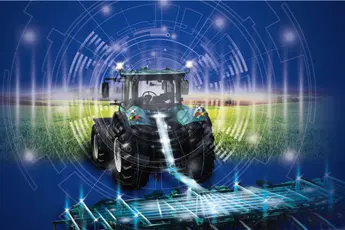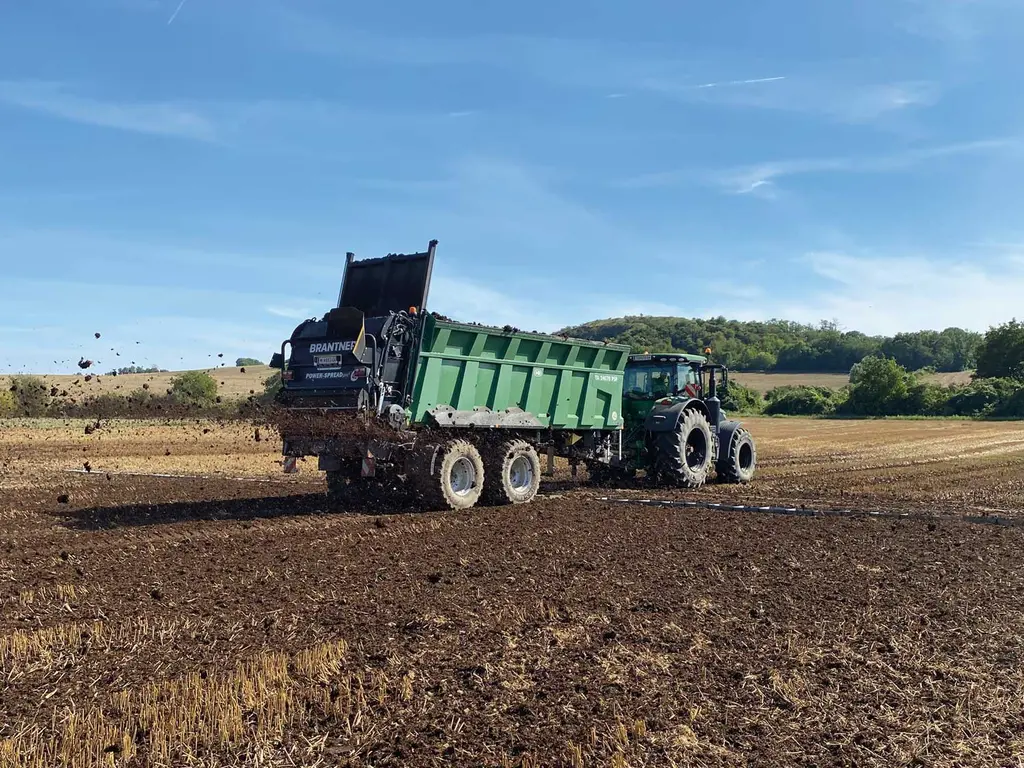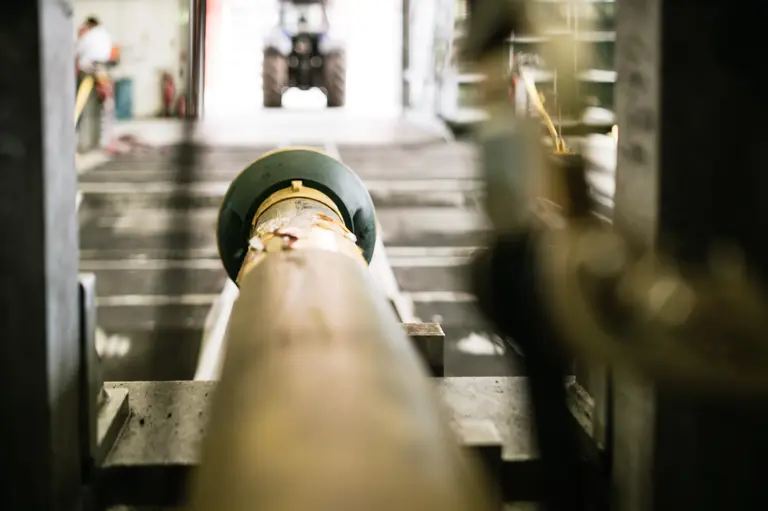Download print version
Test report 7556
The approval
A test mark “DLG-APPROVED for individual criteria” is awarded for agricultural products which have successfully fulfilled a scope-reduced usability testing conducted by DLG according to independent and recognised evaluation criteria. The test is intended to highlight particular innovations and key criteria of the test object. The test may contain criteria from the DLG test scope for overall tests, or focus on other value-determining characteristics and properties of the test subject. The minimum requirements, test conditions and procedures as well as the evaluation bases of the test results will be specified in consultation with an expert group of DLG. They correspond to the recognised rules of technology, as well as scientific and agricultural knowledge and requirements. The successful testing is concluded with the publication of a test report, as well as the awarding of the test mark which is valid for five years from the date of awarding. The DLG Approved Test “Abrasion, Slip Resistance” includes technical measurements on test stands of the DLG Test Center. The test was based on the DLG Testing Framework for elastic floor coverings in the movement, rest and lying area of horses, as of April 2024, and DIN 7861:2024-05 (Elastic floorings in the movement, rest and lying area of horses – Requirements and testing). Other criteria were not investigated.
Assessment in brief
The Eldorado puzzle mat tested here, an elastic stable flooring in the movement, rest and lying area for horses, was investigated with regard to durability and comfort properties on test stands in the DLG Approved Test. The deformability and elasticity of the cubicle mat, the abrasion resistance, the slip resistance, the acid resistance and the cleaning distance were measured and a permanent tread load was applied. Requirements of DIN 7861 are fulfilled.
Test results
| DLG Quality profil | Evaluation |
| Point loading deformability and elasticity in new condition: 3.4 mm | no evaluation |
| Point loading deformability and elasticity following endurance test: 3.4 mm | no evaluation |
| Area loading deformability and elasticity in new condition: 1.5 mm | no evaluation |
| Area loading deformability and elasticity following endurance: test 1.5 mm | no evaluation |
| Lasting deformation following endurance test | ■■■■■* |
| No noticeable wear/ no damage after endurance test | ■■■■■* |
| Slip resistance | ■■■■■** |
| Resistance to feed acid mixture | ■■■■■*** |
| Resistance to uric acid | ■■■■■*** |
| Resistance to sulfurous acid | ■■■■■*** |
| Resistance to ammonia | ■■■■■*** |
| Resistance to barn disinfectans | ■■■■■*** |
| Resistance to rapeseed oil | ■■■■■*** |
| Abrasion | ■■■■■* |
| Cleaning distance with flat jet noozle | ■■■■■* |
| Cleaning distance with a coarse dirt remover | ■■■■■* |
Cleaning distance with a coarse dirt remover
*■■■ or better = meets, exceeds or clearly exceeds the specified DLG standard, ■■ = meets the statutory requirements for marketing the product, ■= failed
**Single criteria slip resistance: ■■ = passed, ■= failed
*** Single criteria acid resistance: ■■■ = beständig, ■■ = limited resistant, ■ = failed
Manufacturer and contact information
Manufacturer and Applicant
Conradi+Kaiser GmbH
Gewerbegebiet Larsheck
56271 Kleinmaischeid,
Germany
Distribution
SAGUSTU International GmbH
Industriestraße 7
D-66892 Bruchmühlbach-Miesau, Germany
Contact
Phone +49 (0) 63728031 0
info@sagustu.de
www.sagustu.de
The product
The method
Deformability and elasticity
Point load
The deformability is measured in new condition and following permanent tread load using ball penetration tests with a calotte (r = 120 mm) and a penetration force of 2,000 N (corresponding to approx. 200 kg).
Area load
The deformability is measured in new condition and following permanent tread load using a horseshoe size 4 and a penetration force of 2,000 N (corresponding to approx. 200 kg).
Permanent tread load
The permanent tread load is measured on a test stand with a horseshoe size 4 in the standard test programme with 250,000 alternating loads at 5,000 N (corresponding to approx. 500 kg).
Abrasion test
In a standardised abrasion test with 10,000 cycles the top cover was grinded with an emery cloth (granulation 280) and a grinding pressure of 500 N (= 8.1 N/cm2 surface pressure). The friction element was cooled continuous with water to prevent an influence of the generated heat during the abrasion test. The size of the grinded area was 61,5 cm².
Slip resistance
The measurements were carried out with the ComfortControl test rig of the DLG test centre. A loaded (10 kg) slide piece was pulled with a velocity of 20 mm/s across the mat.
Used sliding pieces a) Plastic hoof (bare hoof version),
width 140 mm, length 150 mm, thickness 12 mm, hardness Shore C: 80 (+5)
b)Horseshoe, size 4 (shod version)
Acid resistance
A permanent dipping test in accordance to DIN 7861 was carried out. Test samples (size 30 mm x 30 mm) were completely dipped into different test liquids
for 24 hours and 28 days (room temperature 20° Celsius).
In the 28 days test the liquids were changed weekly. After the 28 days the samples were washed with distillate water and dried for 24 hours. Before and after the dipping the weight, the dimensions and the shore hardness (shore A) of the test samples were measured. Additional visual evaluation was done for alterations like colour changing, swelling, destruction or crystallisation. All samples were evaluated in comparison to the standard water.
Cleaning Distance
During test stand investigations with high-pressure cleaners, the spray distance is determined at which no damage can occur to the surface. (High-pressure cleaner: pump output approx. 1000 l/h at about 145 bar with a 25° flat nozzle and dirt cutter, exposure time 1 min).
Detailed account of the test results
Deformability and elasticity
Point load
In the ball penetration tests in new condition with a calotte (r = 120 mm), penetration depth was 3.4 mm. The resulting calculated bearing pressure of 78.0 N/cm². Elasticity was measured following a permanent tread load exerted by a horseshoe size 4 at 5,000 N. Following the endurance test, the penetration depth of the calotte increased from 3.4 mm to 3.5 mm. The bearing pressure decreased from 78.0 N/cm² to 75.8 N/cm² (see Fig. 2). This means that deformability and elasticity slightly increase.
Area load
In penetration tests in new condition with a horseshoe size 4, penetration depth was 1.5 mm. The resulting calculated bearing pressure of 34.8 N/cm². Elasticity was measured following a permanent tread load exerted by horseshoe size 4 with 250.000 alternating loads at 5.000 N. Following the endurance test, the penetration depth stays at 1.5 mm (see Fig. 3).
Permanent tread load
No noticeable wear was observed following exposure to permanent tread load on a test stand with 250,000 alternating loads at 5,000 N. No lasting deformation was observed.
Abrasion test
The abrasion depth after 5,000 cycles amounted to 0.2 mm, this corresponds to approximately 1.2 % of the rubber thickness. Of the ground surface 0.3 grams were rubbed off. The abrasion depth after 10,000 cycles amounted to 0.3 mm, this corresponds to approximately 1.8 % of the rubber thickness. Of the ground surface 0.5 grams were rubbed off. The abrasion depth and the
slight grit implicate a good wear resistance of the mat.
Slip Resistance
The slide pulling tests showed a good slip resistance on the dry or wet rubber mat surface in new condition. The measured friction coefficients (μ) surpassed the minimal value of μ = 0,40
(DIN 7861) and μ = 0.45 (DLG test program).
Acid resistance
The rubber mat was resistant against the used test liquids The differences in weight, thickness and Shore A hardness between the acid treated and not acid treated samples were minor and lay in the range of water as standard. Against the used liquids the rubber mat seems to be suited for the described use.
Table 2: Test liquids and results – acid resistance
| Test liquid | Concentration | Result after 24 hours residence time | Result after 28 days residence time | Evaluation |
| Feed acid mixture | ||||
| concentrate, pH 2 | no changing | no changing | resistant | |
| Excrement acids | ||||
| Uric acid | saturated urea solution (0,4 %) | no changing | no changing | resistant |
| Sulfurous acid | 5-6 % SO2 | no changing | no changing | resistant |
| Ammonia solution | 32 % solution | no changing | no changing | resistant |
| Disinfection liquid | ||||
| Barn Disinfection liquid | 2%-solution of a product with formic acid and glyoxyl acid | no changing | no changing | resistant |
| Rapeseed oil | undiluted | no changing | no changing | resistant |
Cleaning distance
During test stand examinations with high-pressure cleaners, damage to the surface only occurs when a minimum distance of 40 cm is not maintained when using a dirt cutter, or 25 cm when using a flat spray nozzle. Only the agents permitted by the company for the floor covering should be used for cleaning and disinfecting the surface.
Based on test-stand investigations, the criteria tested in this DLG Approved Test evaluate the comfort and durability properties of Eldorado puzzle mat for horses. The tested Eldorado puzzle mat met the requirements of DIN 7861 and the DLG Testing Framework with respect to the investigated criteria.
Applicant
SAGUSTU International GmbH
Industriestraße 7
D-66892 Bruchmühlbach-Miesau
Contact
Telefon 06372 8031-0
Telefax 06372 8031-31
info@sagustu.de
www.sagustu.de
Testing agency
DLG TestService GmbH, Gross-Umstadt location, Germany
The tests are conducted on behalf of DLG e.V.
DLG test framework
DLG Testing Framework for elastic stable floor coverings in the movement, resting, and lying areas for horses, as of April 2024
DIN 7861:2024-04 (Elastic floorings in the movement, rest, and lying areas for horses – Requirements and testing)
Department
Agriculture
Division head
Dr. Michael Eise
Division head
Dr. Harald Reubold *
* Author
Contact us
DLG TestService GmbH - Groß-Umstadt location • Max-Eyth-Weg 1 • 64823 Groß-Umstadt • Tel: +49 69 24 788-600 • tech@DLG.org





















